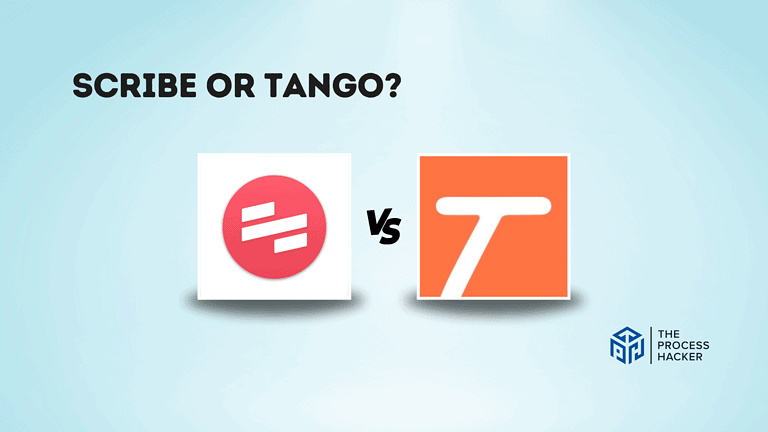The Ultimate Guide: How to Manage Cash Flows for Small Business Success
Tossing and turning, stressed about your business’s finances? You’re not alone. A shocking 82% of small businesses fail due to cash flow problems.
But imagine this: a steady income stream, even during tough times. That’s the power of effective cash flow management.
Ready to transform those financial worries into a well-oiled money-making machine? This guide will give you the tools to take control, master your cash flow, and ensure your business thrives.
Say goodbye to sleepless nights and hello to financial peace of mind. Let’s get started!
What is Cash Flow Management for Small Businesses?
Cash flow management is the process of monitoring, analyzing, and optimizing the money flowing in and out of your business to ensure you have enough cash to cover your expenses and invest in growth opportunities.
What is Cash Flow?
Cash flow represents the total amount of money transferred in and out of your business. It is the lifeblood of your operations.
Positive cash flow means your business has more money coming in than going out, which is essential for growth and stability. Understanding cash flow involves more than just balancing your books; it’s about insightfully planning and making smart financial choices to maintain a steady cash flow throughout the year.
What is Positive Cash Flow?
Positive cash flow occurs when the amount of cash entering your business exceeds the amount leaving it. This is the goal you strive for, as it means your business is generating enough revenue to cover your expenses and invest in growth opportunities.
Positive cash flow doesn’t just happen; it requires meticulous planning, timely receivables collections, and careful budgeting.
A healthy positive cash flow ensures you can pay your bills on time, invest in new resources, and save for future uncertainties. It’s a sign that your business is financially healthy and sustainable.
Why You Should Master Business Cash Flow Management
Mastering cash flow management isn’t just a good idea—it’s essential. It empowers you to make informed decisions, build solid financial relationships, and position your business for long-term success. Here’s why it matters:
- Prevents Cash Shortages and Business Failure: Cash flow problems are one of the leading causes of business failure. Effective cash flow management helps you anticipate and avoid these pitfalls.
- Improves Decision-Making: A clear picture of your cash flow allows you to make informed decisions about investments, expenses, and growth opportunities.
- Enhances Relationships: Timely payments build trust and strengthen your relationships with suppliers and creditors.
- Increases Profitability and Business Value: Efficient cash flow management maximizes your resources, boosts profitability, and increases your business’s overall value.
- Provides Peace of Mind: Knowing your finances are in order reduces stress and allows you to focus on what you do best—running your business.
By mastering cash flow management, you equip your business to navigate economic challenges and capitalize on opportunities.
Managing Cash Flow for Businesses: The 8-Step CASHFLOW Method
Get ready to revolutionize your business finances with our unique CASHFLOW method. This easy-to-remember approach will guide you through the essential steps of effective cash flow management.
- Create a cash flow forecast
- Analyze your current financial situation
- Streamline your invoicing process
- Heighten your focus on accounts receivable
- Fine-tune your inventory management
- Leverage technology and tools
- Optimize your payment strategies
- Watch and adjust regularly
Let’s break down each step to help you achieve a healthy cash flow for your small business!
C – Create a Cash Flow Forecast
Crafting a detailed cash flow forecast is the cornerstone of sound financial planning. Here’s how you can build a reliable 12-month cash flow projection to steer your business toward stability and growth:
- Develop a 12-Month Cash Flow Projection: Start by outlining the cash you expect to flow in and out of your business over the next year. This forecast should reflect all your anticipated financial activities, providing a forward-looking view that helps you make informed business decisions.
- Use Accounting Software to Automate the Process: Leverage technology to streamline this task. Modern accounting software can automate much of the data entry and calculation processes, reducing errors and saving valuable time. These tools often come with predictive analytics features, giving you insights based on past financial data.
- Include Both Expected Income and Expenses: Your projection must encompass all potential income sources and all expected expenses. From operational costs, business loan payments, capital expenditures, and sales revenues, account for every dollar to ensure no surprises.
- Factor in Seasonal Fluctuations and Market Trends: No business owner operates in isolation from its environment. Consider seasonal changes in your sales or expenses and be mindful of broader market trends that could impact your business. This will help you prepare for periods of high expenditure or low income, ensuring you maintain a positive cash flow throughout the year.
When you start with a comprehensive cash flow forecast, you set a solid foundation for your financial management strategy. This proactive approach prevents cash shortages and positions you to thrive, making planning for investments, handling emergencies, and improving overall financial health possible.
A – Analyze Your Current Financial Situation
Understanding your present financial landscape is crucial for making wise decisions in the future. Make a habit of regularly reviewing your cash flow statement to spot trends in your income and expenses. Look for seasonal patterns or unusual fluctuations that could impact your cash flow.
Beyond simply tracking income and expenses, dig deeper into your small business financial data. Calculate your cash conversion cycle to understand how long it takes to convert inventory into cash. Also, determine your break-even point—the sales volume needed to cover all your costs—to gain insights into your profitability.
S – Streamline Your Invoicing Process
Speed up your payments and improve your cash flow by making it easy for clients to pay you. Embrace electronic invoicing systems to deliver invoices instantly and securely. Ensure your invoices are clear and itemized, leaving no room for confusion.
Establish clear payment terms and stick to them. Let your clients know when payments are due and the consequences of late payments. Offering a small discount for early payments can also incentivize clients to pay sooner.
Don’t let overdue invoices linger. Follow up promptly and professionally to ensure you get paid on time. Consistent and timely invoicing is key to maintaining a healthy cash flow.
H – Heighten Your Focus on Accounts Receivable
Your accounts receivable represent money owed to your business – and ensuring you collect those payments promptly is critical for healthy cash flow.
Begin by setting up a clear credit approval process for new customers. Assess their creditworthiness and payment history before extending credit. Once you’ve extended credit, stick to a consistent collections policy. Communicate your payment terms clearly and follow up promptly on overdue invoices.
Explore options like invoice financing or factoring if you need to access cash tied up in unpaid invoices. These services can provide immediate cash in exchange for a fee.
Finally, make it convenient for your customers to pay by offering multiple payment options, such as business credit cards, online payment, and ACH transfers.
F – Fine-tune Your Inventory Management
Many businesses invest significantly in inventory. However, too much inventory can consume valuable cash that could be used elsewhere. That’s why it’s important to fine-tune your inventory management practices.
Consider adopting just-in-time inventory strategies to reduce the amount of cash in stock. This means ordering inventory only when needed rather than stocking up in advance. Conduct regular inventory audits to ensure your records are accurate and identify any discrepancies.
If slow-moving items are taking up space in your warehouse, consider liquidating them through discounts or promotions. Don’t hesitate to negotiate better terms with your suppliers, such as extended payment terms or volume discounts.
By optimizing your inventory levels and improving your supplier relationships, you can free up cash and improve cash flow and your overall financial health.
L – Leverage Technology and Tools
In today’s digital age, many technological solutions can simplify and enhance cash flow management efforts. Invest in robust accounting software to automate invoicing, expense tracking, and financial reporting tasks. This not only saves time but also reduces the risk of errors.
Cash flow management apps can provide real-time insights into your financial health, allowing you to track your income and expenses on the go. Online banking platforms enable faster and more convenient transactions, making it easier to manage cash flow efficiently.
For businesses with complex cash flow patterns, consider exploring AI-powered forecasting tools. These tools can leverage machine learning algorithms to predict how much cash you will have in the future with greater accuracy, empowering you to make even more informed financial decisions.
O – Optimize Your Payment Strategies
Strategic payment management can significantly improve your cash flow. Negotiate longer payment terms with your vendors to give yourself more time to collect customer payments. Time your payments strategically, ensuring you have enough cash to cover your expenses without paying bills too early.
Get a business credit card for short-term financing and take advantage of its rewards programs. If you anticipate occasional cash flow gaps, consider establishing a line of credit with your bank. This will give you access to funds when needed, giving you added financial flexibility.
By optimizing your payment strategies and leveraging the right financial tools, you can maintain a healthy cash flow and ensure your business has the resources to thrive. Remember, proper cash flow management is an ongoing process. Stay vigilant, adapt your strategies, and watch your business flourish.
W – Watch and Adjust Regularly
Cash flow isn’t a “set it and forget it” aspect of your business. Make it a habit to monitor it regularly—weekly or even daily, depending on your business’s needs. Compare your actual results to your forecasts to see where you’re on track and where you might need to make adjustments.
Don’t hesitate to adjust your strategies if you notice discrepancies or challenges. Perhaps you need to tighten up your collections process, reduce expenses, or explore new revenue streams.
Finally, stay informed about market conditions and economic factors that could impact your cash flow. Being proactive and adaptable will help you navigate challenges and keep your business on a path to success.
Key Considerations for Successfully Managing Cash Flows in Your Small Business
While the CASHFLOW method provides a solid foundation, there’s no single solution for perfect cash flow management. Each business is unique. Let’s explore vital insights to tailor your approach and set your business up for financial success.
- Build a cash reserve: Strive to have 3-6 months’ worth of operating expenses tucked away. This safety net can be crucial in handling unexpected situations, from equipment breakdowns to economic downturns.
- Understand your business cycle: Every industry has its rhythms. Recognize how seasonality or broader trends affect your cash flow, and plan accordingly.
- Maintain good relationships with lenders: Cultivate strong relationships with lenders and financial institutions. Access to credit can be vital during lean times or when you’re ready to invest in growth opportunities.
- Don’t neglect profitability: While cash flow is king, don’t lose sight of profitability. Ensure your pricing and profit margins are healthy to support your business’s long-term sustainability.
Taking it to the Next Level: How to Optimize Cash Flow for Growth
Optimizing your cash flow for growth involves innovative strategies beyond mere sustainability. Here are several advanced techniques that can help you supercharge your cash management:
Implement Dynamic Pricing to Maximize Revenue During Peak Periods
Dynamic pricing allows you to adjust prices based on market demand, competition, and other external factors. By leveraging this strategy, you can capitalize on peak periods to maximize revenue, bolstering your cash reserves.
This approach requires careful analysis to avoid alienating customers with perceived price fluctuations but can be highly effective in industries with variable demand patterns.
Explore Strategic Partnerships to Reduce Costs and Increase Sales
Forming alliances with other businesses can open up avenues for cost reduction through shared resources or bulk purchasing. Moreover, these partnerships can also help penetrate new markets and increase sales channels, boosting your cash inflows.
Choose partners whose business goals align with yours and whose offerings complement rather than compete with yours.
Invest in Customer Retention to Ensure a Steady Stream of Repeat Business
Acquiring new customers is often more costly than retaining existing ones. Implement programs that enhance customer satisfaction and encourage repeat business, such as loyalty programs, personalized service, or regular customer feedback loops.
A steady stream of repeat business can stabilize cash inflows and provide more predictable financial planning.
Consider Outsourcing Non-Core Functions to Reduce Fixed Costs and Improve Flexibility
Outsourcing functions like IT, HR, or even some aspects of customer service can transform fixed labor costs into variable costs, giving you more flexibility to scale up or down based on business needs. This reduces your overhead and allows you to focus on core business activities that drive revenue and growth.
By adopting these advanced strategies, you position your business to manage its cash flow more effectively and leverage it as a strategic tool for growth. Each step, while potentially challenging to implement, can significantly improve how your business generates and uses cash, setting the stage for a prosperous year.
Alternatives to Traditional Cash Flow Management
While the CASHFLOW method we’ve outlined provides a robust framework, it’s worth exploring other cash flow management approaches that might resonate with your business’s specific circumstances:
- Zero-based budgeting: With zero-based budgeting, you start with a clean slate each budgeting period. Every expense must be justified, encouraging a critical review of all costs. This can help identify waste areas and promote a leaner, more efficient operation.
- Lean financial management: Applying lean manufacturing principles to your finances can streamline processes, reduce waste, and improve your overall cash flow. This approach emphasizes eliminating unnecessary steps and maximizing efficiency in every financial activity.
- Value-based financial management: This method shifts the focus from cost control to value creation. You prioritize investments and activities that deliver the most value to your business, thus enhancing cash flow and driving growth.
Remember that the most effective cash flow management strategy aligns with your unique business needs and goals. Don’t be afraid to experiment with and adapt different approaches until you find the one that delivers the best results.
Final Thoughts on Managing Cash Flows for Small Business Owners
Mastering cash flow management is like giving your small business a financial superpower. It empowers you to make informed decisions, seize growth opportunities, and weather any economic storms and negative cash flow.
By following our proven CASHFLOW method and incorporating the additional tips in this guide, you’ll be well on your way to achieving financial stability and long-term success.
Cash flow management is an ongoing process, but the rewards are well worth the effort. So start taking control of your finances today, and watch your business thrive today and beyond!







